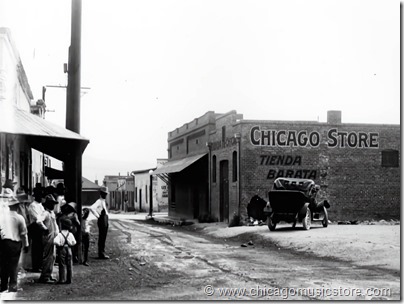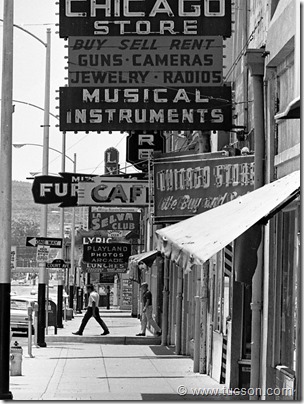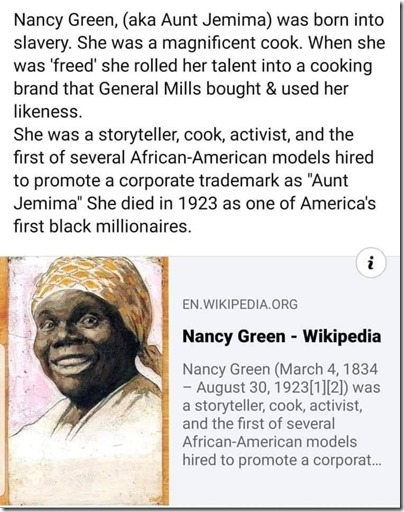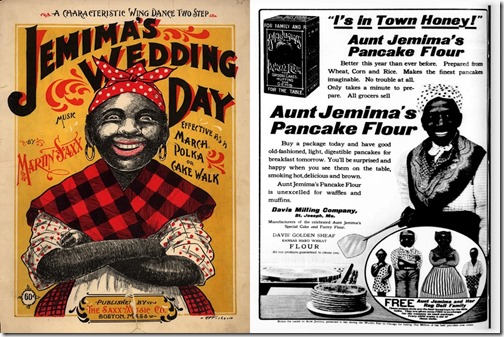Reckless Behavior in Enemy Territory
27 October 2021 • by Bob • Military, Humor, History
Okay, It's Time to Come Clean. One evening, after the Fall of the Wall but long before German Reunification, I hopped in the car and drove into East Germany to spend some
I studied several of our official military maps beforehand, and I had planned out my route in detail. It was only a
I was dressed in civilian clothes that would pass for a native German, and as I approached my destination, I blended into a crowd of East German college students who were milling about. I was 25 years old at the time, so my youthful appearance and choice of attire matched the rest of the group.
A short time later, two Bad Guys in officer uniforms happened by. I left the group of students, and I approached the two Bad Guys. I greeted them with a thoroughly awful Bad Guy accent - which was by intention. I explained in a mixture of German and Bad Guy dialect that I had studied their language in school (which was true), and that I hoped to study more (which was also true). As I continued to speak their language badly, I was gambling on the notion that all I had to do to sell the illusion that I was an East German college student was to make sure that my grasp of the German language exceeded theirs.
My ruse paid off - the two Bad Guys dropped their guard, and they were more than willing to help out a poor college student who was butchering their language. Shortly after that, I was asking them questions about their uniforms, what they thought of Germany, where they were stationed, and... some other things. It's been years, so I don't really remember everything that I asked them. (Although, even if I did remember what I asked them, I'd still say that I didn't remember, so I'll leave it to you to decide whether I'm telling the truth.)
After several minutes, I decided that I needed to make my exit. I thanked the pair of Bad Guys for their time, then I joined another group of college students that were walking in the opposite direction of my car. After I had walked a sufficient distance, I broke from the group of students and headed down a narrow street, and then I began a long process of cutting through yards and hopping fences as I made my way back to where I had stashed my car. When I arrived, I made a quick inspection and decided that it hadn't been touched, then I climbed behind the wheel and headed out of town. I didn't head west, though - I headed north for a
I had lots of details bouncing around in my head, but I was careful not to write anything down until after I had crossed the border back into West Germany.
I will admit, this short jaunt into enemy territory was... fun. And it produced a modicum of interesting information, but nothing that was earth-shattering. However, years later, I can put this entire experience in perspective: no one knew where I was. This wasn't anything that I was tasked to do. I wasn't working for anyone else. I was a member of the US Army, in civilian clothes, in a civilian vehicle, on foreign soil. If I'd been caught - or killed - there's a very good chance that no one in the West ever would have known what happened to me.
In other words, I was an idiot.
POSTSCRIPT:
My spouse would like me to remind everyone that even though 30 years have passed, she’s still angry about this.
![]()
Those Who Do Not Study History
14 August 2021 • by bob • Politics, History, Military
In the 1980s, the Mujahedeen forces in Afghanistan beat the USSR by simply outlasting them. The USSR withdrew its forces in embarrassment after failing to achieve its military objectives despite a decade of fighting, and the USSR imploded a few years later.
32 years after the USSR's humiliating defeat in Afghanistan, the Taliban forces have beaten the USA by simply outlasting them. The USA is withdrawing its forces in embarrassment after failing to achieve its military objectives despite two decades of fighting, while the USA is slowly imploding for its own reasons...
Coloring Historical Photographs - February 13th, 2021, Edition
13 February 2021 • by Bob • Photography, History
A year ago I made one of my first attempts a colorizing a photo, and the results were not very good. The photo in question was a boyhood photo of my father-in-law, Terry Wetmore, and the final outcome of my colorization efforts was so bad that I'd rather not share it publicly.
However, I've colorized a few dozen photos since then, and I've picked up a few skills along the way. With that in mind, I thought that I would take another pass at his photo to see if I could do a better job the second time around, and here are the results.
This image is certainly better than last year's attempt, but I still have lots of room for improvement. I think I'll try again after another year or so to see what the results are like.
Coloring Historical Photographs - January 16th Edition
16 January 2021 • by Bob • Photography, History
I found another interesting photo in an aviation forum that looked like a good candidate for colorizing, in this case it was the crew of the "Blue Dreams" B-17, which looks like they're celebrating after a successful mission.
As I have done in the past, I tried to discover any information that I could about this photo or the aircraft. The best that I could do was to find a page that mentioned the ball turret gunner having completed 25 missions in this aircraft. In World War II, that usually meant the crew would rotate stateside, and for his sake I hope that happened.
That being said, I found another web page that mentioned the aircraft as having completed 29 missions before it crashed. The pilot noticed that the aircraft was leaking fuel after takeoff, and he set the aircraft down without lowering the landing gear. The aircraft was a total loss, but the crew was able to escape without harm. Still - that was a sad fate for a beautiful aircraft.
Tucson's Chicago Music Store was an Institution
27 December 2020 • by Bob • Arizona, History, Music
Tucson's Chicago Music Store recently celebrated its centennial, and I must admit - I have a special place in my heart for that store. Growing up as a young musician in Tucson, I was intimately familiar with it.
Back in the late 1970s and early 1980s, I used to visit the Chicago Store all the time and haggle with Joe (who ran the place) over pieces of vintage gear that clearly had no actual value to Joe whatsoever. Joe always seemed cranky, and on one occasion he threw me out of the store when I called him a thief for starting his half of the negotiation far too high and refusing to budge.
However, on a different day, I had been haggling with Joe for several minutes when he had to take a phone call. After he walked away, his brother, Phil, walked over and explained the following to me: the Chicago Store had already made Joe a rich man (in 1980s money), and Joe didn't actually need the work. Phil continued by saying that Joe simply loved to haggle, and if I was willing to put in the time and give Joe a good fight, I could eventually get a good price.
This changed my whole world, and I started to budget several hours per trip to the Chicago Store just in case I found something that was going to require a little more time to negotiate. Over the years I bought a lot of great gear from the Chicago Store, and to this day I still own several items that I bought there. But more than that, I learned how to give Joe a "good fight," and I walked away with dozens of great deals.
Joe and I never grew close enough to be friends, of course, because I was never more than a customer to him, but I'd say beyond a shadow of a doubt that I had become one of Joe's "regular customers," and he always greeted me with a huge smile every time I entered his store - whether I bought anything at all.
I was terribly saddened when Joe and Phil both passed away several years ago.
POSTSCRIPT:
Here are a few articles about the Chicago Store's and it's future.
Coloring Historical Photographs - December 22nd Edition
22 December 2020 • by Bob • Photography, History
A friend of mine posted a link to an article titled Deconstructing the Reconciliation Narrative of the Civil War, which was a fascinating article that presented an interesting look at a difficult time in the United States' troubled past: the period of Reconciliation that followed the post-Civil War Reconstruction. If you're into history as I am, it might be worth your time to read.
That being said, the article contained a wonderful photograph of General George H. Thomas that I thought would make a great candidate for colorization. With that in mind, here are the before and after views of that photo.
One interesting item of note about the final image: as I have always done in the past, I had edited all of the imperfections from the original photo; the scratches, discolorations, tears, etc. However, the fully-restored image of General Thomas over a flat background looked so unnatural that I decided to overlay my "finished" image over the original to add back a few imperfections. In the end, I think this looked photo looked far better with a few problems in it.
More 511th History: That Time I Was a Russian Major
08 October 2020 • by Bob • Military, Humor
At some point during my tenure with the 511th MI Company, I was requested by some high-ranking US military officials to help review the readiness of 11th ACR troops. The time was in the late 1980s, and a delegation could show up at any time for a surprise inspection during the drawdown of nuclear armaments in Germany. This was important work, and our senior leadership needed to know that our troops would do the right thing when the time came. On the other hand, they also needed to know that our troops would prevent bad things from happening, too.
With that mind, I was dressed in a Soviet Major's Uniform (from the Tank Corps), assigned a Russian "translator," and I was asked to pretend to be a particularly "difficult" guest during a faux inspection.
To be more specific, these high-ranking officials asked me to try getting into all sorts of mischief in order to evaluate how the unsuspecting 11th ACR troops would react. I'm the kind of guy that you don't have to ask twice - I could get into lots of trouble rather quickly, and my victims probably would have been seriously ticked off if they ever suspected that I wasn't who my official escorts said I was.
My translator was SPC Meyers, who was a good friend of mine from the 511th. We were both passably fluent in Russian, which was more than was necessary to fool our unsuspecting victims. All of our personal conversations in Russian were about what was going on, how much fun we were having, where to go for lunch after we were done, what we should do to mess with people, etc. However, whenever I would say something in Russian, my friend would "translate" something entirely different (and often exasperating) to our hosts.
Here's an example:
| Me | [Saying something innocuous in Russian to my translator.] |
|---|---|
| Translator | "The major would like to see inside an Abrams tank." |
| 11th ACR dude | "No, that's off limits." |
| Translator | [Saying something innocuous in Russian to me.] |
| Me | [Saying something innocuous in Russian, but louder and angrier.] |
| Translator | "The major is very upset; he says that's part of his inspection duties." |
| 11th ACR dude | "I'm really sorry, and uh - can someone help me? What do I do now?" |
| Translator | [Apologetically in Russian to me: "He'd kick our butts if he knew we were so full of crap."] |
| Me | [Angrily in Russian: "Yeah, but this is so much fun. Still, we'd better not show our faces around here for a few weeks."] |
Ah, good times.
Remembering Tucson's Bob Cooke
16 September 2020 • by Bob • Arizona, Tucson
I grew up in Tucson, and I have fond memories of a local radio DJ that many people in town loved to listen to back in the late 1970s and early 1980s. However, to put things in perspective, radio isn't the same as it used to be; more and more of the contemporary radio programming is syndicated, playlists are dictated by countless business decisions, and - to be honest - fewer and fewer people are listening to radio as it fights to compete with satellite services, streaming apps, and digital audio. (I will admit, I personally listen to a collection of MP3s that are stored on a flash drive whenever I'm traveling in my car these days.)
But back in the late 1970s and early 1980s, radio was king. For most music fans, radio was usually the only way that you discovered new artists, and it was also how you learned that your favorite artists had released their latest albums. There was no Internet back then, and before MTV launched in 1981 there was generally no television coverage for rock music news. In short, if you liked music, there was radio - and that was it.
When I was in High School, there were two rock stations in Tucson: KWFM and KTKT-FM (which would later become KLPX). Each station had their fair share of DJs, and there was one DJ who drifted back and forth between those two stations: Bob Cooke. He was Tucson's premier funny man - he always had the best jokes, but he was never over the top. (Well, perhaps on occasion...)
I recall staying up late on far more nights than I will admit to finish homework assignments as my semesters came to an end, and Bob Cooke always played requests from students all over town who were engaged in similar
One of the particularly amusing parts of Bob's shows was when he was required to read advertising copy live while on the air, because he could never do it without messing with the scripts that he had been handed. I vividly recall one morning when he was reading the advertisements for Farmer John's Sausage Links, which Bob humorously changed to "Farmer John's Wieners." He kept saying the rest of advertising copy incorrectly, and therefore he had to keep starting over. However, restarting the script meant that he would eventually run out of the music that was supposed to play in the background, so he would have to start over - again and again. The entire episode was side-splittingly funny, and I laughed so hard I probably cried...
People who grew up in the "Naked Pueblo" (as Cooke used to call Tucson) will remember that Bob was tragically killed by a deranged radio listener in August, 1982. (See https://bit.ly/2RswW5o.) People throughout the Tucson valley mourned his untimely death at the young age of just 28 years.
It's hard to believe that it's already been 38 years since his murder, because I can still remember countless hours listening to Bob's priceless and bizarre sense of humor. I'm sure that he would have retired years ago if he had had the chance to live a full and happy life, which means both Bob and the classic radio format that made him famous might have been able to ride off into the Arizona sunset together.

Happy Treason Day 2020!
05 July 2020 • by Bob • History, Humor
In honor of today's date - July 4th, 2020 - I posted the following meme to social media.
Most people appreciated the humor as it was intended. However, to understand the funniest part about that meme, you have to study American History. And by doing so, you learn that the early American colonists REALLY WERE a bunch of ungrateful colonials.
The "Taxation Without Representation" that the American Colonists were so quick to condemn was really England asking the colonists to pick up the financial burden for their recent freedom from French rule. The King of England had recently pushed the French out of the American colonies, but the average British citizen was sick of having to foot the bill for bailing out those pesky American colonials. So the King of England shifted the financial burden of freeing the American colonies back onto the American colonists, who resented the thought of having to pay for their own freedom, so they kicked the British out of America. The King of France, still licking his wounds from France's loss to England, gave the American colonists the money to do so. However, the average French citizen resented having to foot the bill for bailing out those pesky American colonials, so they overthrew their monarchy and killed the king.
And all of this was because the American colonists were a bunch of selfish jerks.
With that in mind, I say once again: "Happy Treason Day - You Ungrateful Colonials!"
![]()
The Racist Roots of Popular Product Names
18 June 2020 • by Bob • History
There has been a great deal of public outcry in the wake of several companies' decisions to drop objectionable marketing identities from their advertising, most notably the characters of Aunt Jemima, Uncle Ben, Mrs. Butterworth, etc. (Note: I consistently use all three of those products; I hope that these companies' decisions do not alter anything but the product names.)
In any event, someone I know posted the following image to social media. As you might expect, several people responded to this image by claiming that the companies' decisions to rename their products and drop the marketing identities are an overreaction. And in the case of Aunt Jemima, their assertion was that it would erase the image of a successful African American woman.
There was a great deal of banter about erasing history in the name of social justice on the thread, which one person paraphrased as, "people are gonna see what they wanna see." What is ironic, however, is that most of the people failed to read the rest of the Wikipedia article about Nancy Green at https://bit.ly/2AGB6C6. Here's an excerpt to illustrate some of what they missed:
"Biography: Nancy Green was born into slavery on November 17, 1834, near Mount Sterling in Montgomery County, Kentucky.[4] She was hired in 1890 by the R.T. Davis Milling Company in St. Joseph, Missouri, to represent 'Aunt Jemima', an advertising character named after a song from a minstrel show.[3] Davis Milling had recently acquired the formula to a ready-mixed, self-rising pancake flour from St. Joseph Gazette editor Chris L. Rutt and Charles Underwood and were looking to employ an African-American woman as a Mammy archetype to promote their new product.[6]"
Now look up the "Mammy Archetype" at https://bit.ly/2zHHI2n:
"A mammy, also spelled mammie, is a U.S. stereotype, especially in the South, for a black woman who worked in a white family and nursed the family's children. The mammy figure is rooted in the history of slavery in the United States. Enslaved black females were tasked with domestic and childcare work in white American enslaver households. "
So here's the real story: while the actress herself, Nancy Green, may have found a modicum of success, she did so by portraying a racist caricature of herself. However, the text that is appended above the Wikipedia excerpt isn't true; Green was only hired as a spokesperson, and she was not a millionaire. The actual pancake product was created by Chris L. Rutt and Charles G. Underwood, not Green. When Rutt and Underwood couldn't make their product a success, they sold their recipe to the Davis Milling Company, who renamed their company after a racist stereotype from vaudeville shows of their day (see https://bit.ly/2YdmRO7).
So in deference to the original image that was posted, the Aunt Jemima character has extremely racist roots in history. With that in mind, it's not a question of people only seeing what they wish to see, it's a question of people choosing what they wish to ignore.













